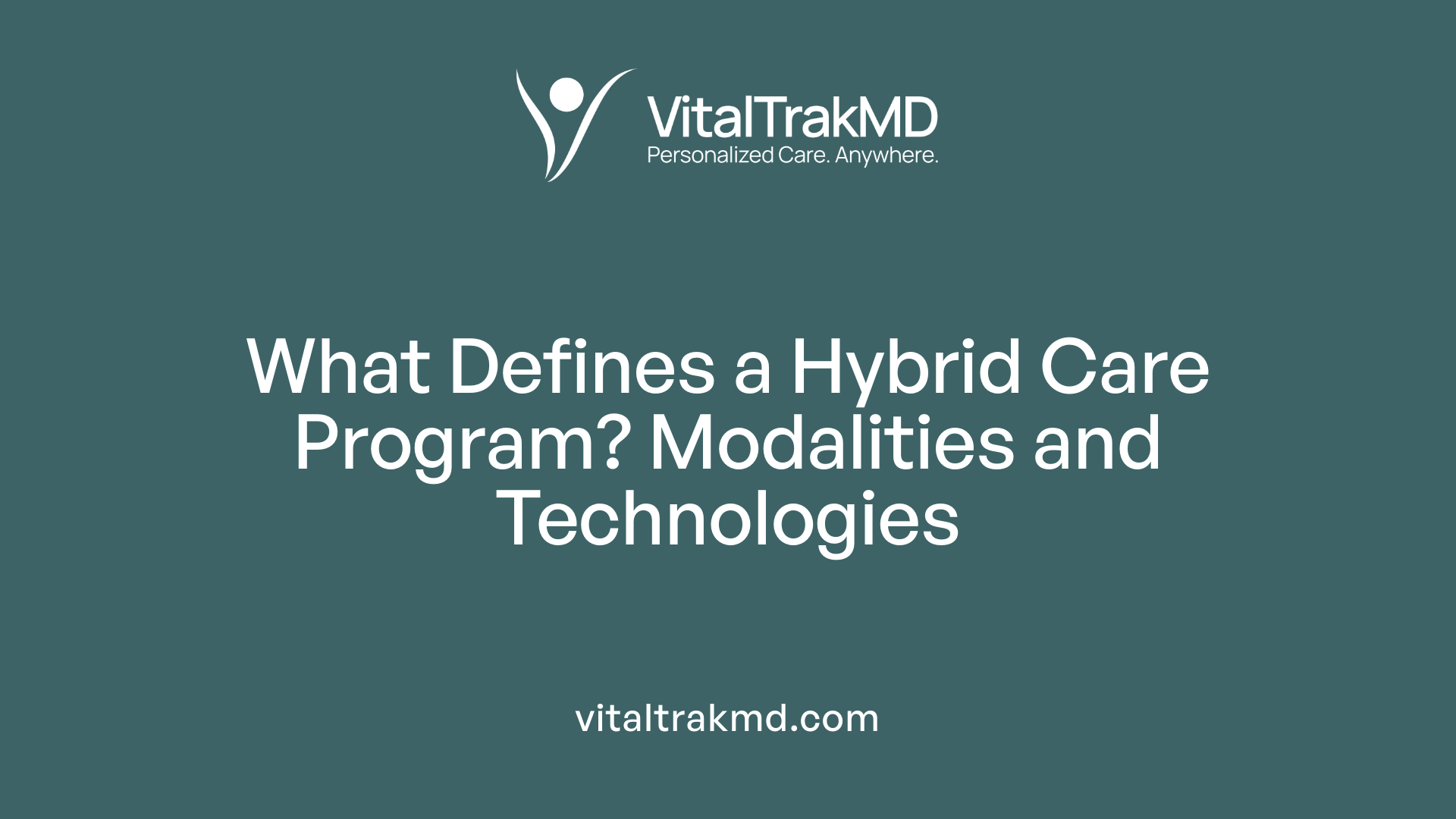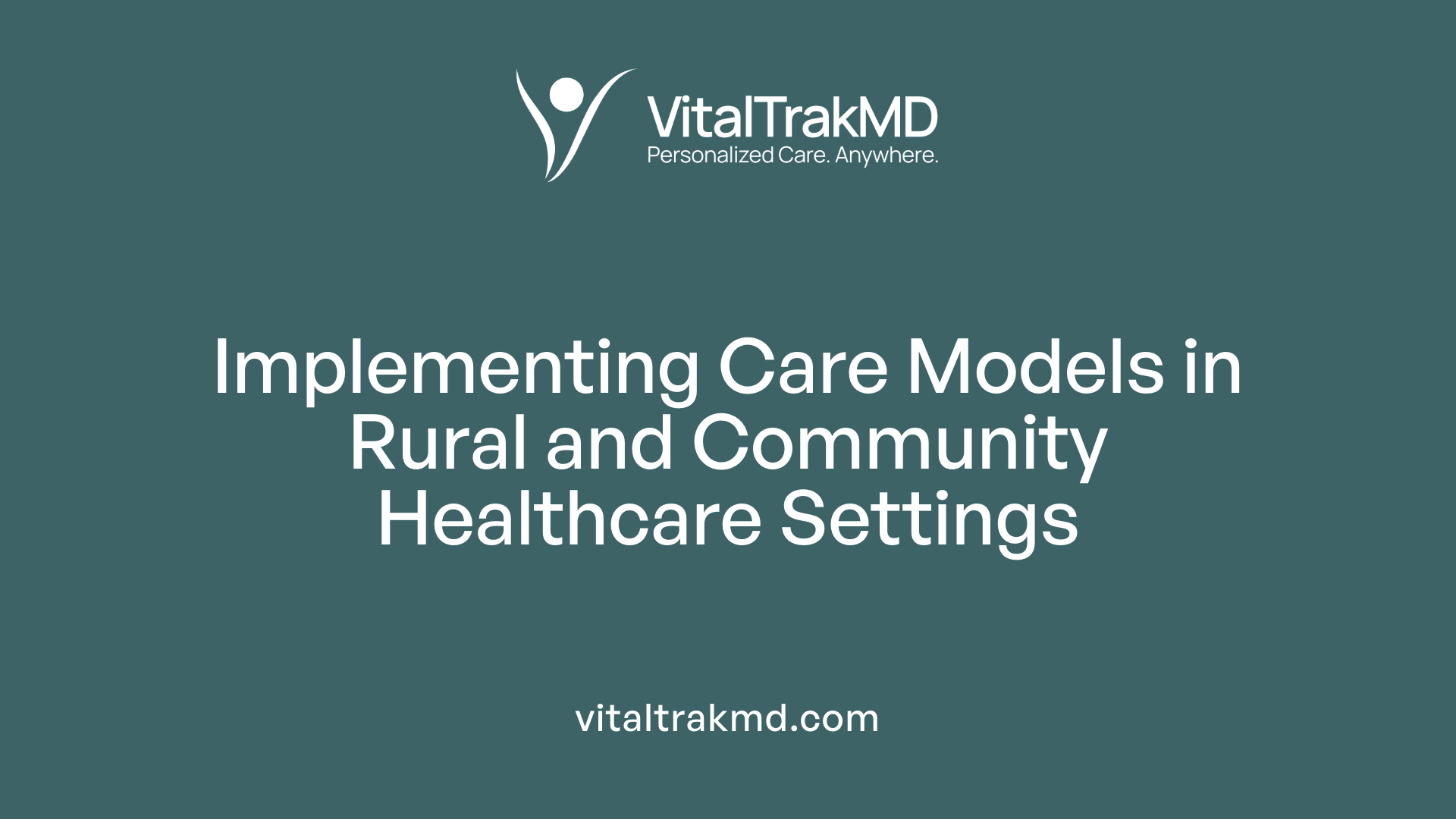Chronic Care Clinics Versus Hybrid Care Programs for Seniors

Understanding the Landscape of Elderly Care Models
As populations age globally, healthcare systems face increasing pressure to deliver effective, accessible, and sustainable care for seniors with chronic conditions. Two prominent approaches—chronic care clinics and hybrid care programs—have emerged to address these needs, each with distinct features, benefits, and challenges. This article dives deep into defining these models, examining their variation in application, and evaluating their effectiveness, especially in the context of recent innovations and the COVID-19 pandemic.
Core Features and Definitions of Chronic Care Clinics and Hybrid Care Models for Seniors

What are the core features and definitions of chronic care clinics and hybrid care models for seniors?
Chronic care clinics are specialized healthcare settings designed to manage long-term health conditions prevalent among seniors. These clinics focus on ongoing, comprehensive, and personalized care, often involving multidisciplinary teams that include physicians, nurses, social workers, and other healthcare professionals. The main goal is to improve health outcomes and quality of life for older adults with complex health issues.
Core components of chronic care clinics include detailed assessments of patient needs, development of tailored care plans, coordination of various services, ongoing monitoring, and support for both patients and caregivers. They emphasize proactive management of chronic diseases such as hypertension, diabetes, congestive heart failure, and COPD, aiming to prevent hospitalizations and improve disease control. Additionally, these clinics prioritize seamless care transitions, effective communication among providers, and engagement of patients in their own care.
Hybrid care models blend traditional face-to-face healthcare with digital health solutions, creating a flexible and accessible approach to senior care. They integrate in-person visits with telehealth services like virtual consultations, remote patient monitoring, and digital education platforms. This combination allows seniors to receive necessary medical attention without frequent travel to clinics, reducing transportation barriers and accommodating mobility limitations.
The core features of hybrid models include technological integration for remote diagnostics and treatment, virtual check-ins, and continuous health data collection—helping providers to personalize care plans and detect issues early. These models also support care at various settings, such as at home, community clinics, or hospitals, fostering a patient-centered approach that enhances convenience and adherence.
Despite advantages, implementing hybrid care involves challenges like ensuring data security, managing digital literacy disparities, and integrating different systems effectively. Nonetheless, when well-designed, hybrid care models can significantly boost patient engagement, enhance the efficiency of healthcare delivery, and address specific needs of the elderly population more flexibly.
By combining the detailed, personalized strategies of chronic care clinics with the accessibility of digital health tools, these models aim to create a sustainable, efficient, and patient-centered framework tailored for aging populations with complex health conditions.
What Constitutes a Hybrid Care Program and Its Modalities

What is a hybrid care program and how does it integrate different healthcare modalities?
A hybrid care program merges traditional in-person healthcare appointments with virtual healthcare services, creating a flexible and patient-centered approach to medical care. This model leverages both physical visits and digital health solutions to enhance access, convenience, and the overall quality of care.
In practice, hybrid care integrates various healthcare modalities such as video consultations, remote patient monitoring (RPM), digital check-ins, and electronic health records. Technologies like telehealth platforms, mobile health apps, wearable sensors, and remote diagnostic tools play vital roles in this integration. These tools enable providers to monitor patients’ health status continuously, triage issues efficiently, and deliver personalized care plans.
For example, a patient with a chronic condition might have routine check-ins via video, while their vital signs are automatically transmitted through wearable sensors. Questions can be addressed in real-time, medication management can be adjusted remotely, and follow-up care can be scheduled seamlessly. When cases involve complex or urgent health concerns, patients may still be referred for in-person evaluation and treatment.
Hybrid programs are especially critical in reaching underserved or remote populations, reducing wait times, and decreasing the burden on healthcare facilities. They foster better care coordination by integrating digital systems with traditional practices, ensuring that patients receive the right level of care at the right time.
Successful implementation depends on sophisticated digital platforms that facilitate care pathway coordination, effective communication between patients and providers, and workflow management. These platforms enable a smooth transition between virtual and in-person services, supporting diverse care needs.
Overall, hybrid care models represent a significant shift towards more adaptable and accessible healthcare, transforming how services are delivered and experienced.
| Aspect | Description | Examples |
|---|---|---|
| Definition | Blending physical visits with digital health tools | Telehealth, remote monitoring |
| Technologies | Platforms, devices, sensors, apps | Video conferencing, wearable sensors |
| Benefits | Enhanced access, efficiency, patient satisfaction | Reduced wait times, remote management |
| Challenges | Digital literacy, integration, security | Connectivity issues, data privacy |
| Application | Chronic disease management, minor conditions, follow-ups | Diabetes, psoriasis, post-surgical care |
How do hybrid care programs improve healthcare delivery?
By combining the strengths of both in-person and virtual care, hybrid programs improve the overall healthcare experience. They reduce unnecessary visits, allow more frequent monitoring, and enable early intervention. For patients in rural or underserved areas, these models make healthcare more accessible, saving travel time and costs.
Furthermore, hybrid care supports better management of chronic diseases, providing continuous care outside of traditional settings. Patients can engage with providers more regularly through virtual check-ins, and providers can respond promptly to changes in health status.
Despite these advantages, challenges like integrating digital systems, ensuring equitable access, and maintaining high-quality care remain. Nevertheless, ongoing technological development and policy support are helping to overcome these barriers and expand hybrid care adoption.
In summary, hybrid care programs are reshaping healthcare by offering more adaptable, efficient, and inclusive services that meet patients’ evolving needs and leverage digital innovations for better health outcomes.
Selecting Care Models for Seniors with Chronic Conditions
What criteria should be considered when selecting appropriate care models for seniors with chronic conditions?
Choosing the right care model for older adults with multiple chronic conditions involves a thorough understanding of each individual’s unique health circumstances and social context. The primary step is a detailed assessment of the senior’s health needs, including medical conditions, functional limitations, cognitive status, and behavioral health issues. This helps determine the level of clinical support and daily assistance they require.
Socioeconomic factors also play a vital role. Seniors living in poverty, rural areas, or with limited social support may need tailored solutions to overcome barriers like transportation, technology access, and caregiver availability. Addressing these social determinants ensures equitable access to quality care.
Person-centered principles are central to selecting a suitable model. Such approaches focus on respecting the patient’s preferences, values, and goals. Building a trusting relationship early on helps in shared decision-making, which enhances engagement and adherence to care plans.
The environment or setting where care is delivered is another critical consideration. Options range from in-home services, assisted living, to skilled nursing facilities. The choice depends on the patient's functional capabilities, safety concerns, and the intensity of medical needs. In some cases, hybrid models combining home-based and facility-based care offer the flexibility necessary to optimize health outcomes.
Effective care models often utilize frameworks like the 4Ms — What Matters, Medication, Mentation, and Mobility — to guide comprehensive, person-centered treatment. Early relationship building, empathic communication, and shared decision-making are essential elements that support tailored, effective care.
Implementing successful models requires customization to factors such as geographical location, available resources, and the specific health profiles of patient subgroups. Evidence-based strategies, active care coordination, and technological tools like Electronic Health Records are crucial for enhancing data sharing, reducing fragmentation, and improving patient outcomes.
In summary, a care model's success hinges on integrating clinical needs with social realities, promoting personhood and participation, and aligning care settings with individual capacities and preferences. This comprehensive approach ensures that older adults with chronic conditions receive effective, respectful, and sustainable care tailored to their life contexts.
Impact of COVID-19 on Chronic and Hybrid Care Delivery for Seniors

How has the COVID-19 pandemic impacted the delivery of chronic care and hybrid care models?
The COVID-19 pandemic has profoundly transformed the way healthcare services are delivered, especially for older adults with chronic conditions. One of the most notable changes has been the rapid adoption and expansion of hybrid care models, which combine traditional in-person visits with virtual health services. This shift was driven by the urgent need to minimize infection risks while maintaining continuous care for vulnerable populations.
Healthcare systems around the world restructured their facilities and care delivery strategies. An excellent example is Sheba Medical Center in Israel, which developed Sheba Beyond, the country's first virtual hospital. This innovative program provides virtual clinics, remote chronic disease management, expert consultations, and even home hospitalization through advanced remote technologies. Such initiatives exemplify how hospitals integrated physical and virtual spaces to increase flexibility and capacity.
The pandemic accelerated the use of telehealth, remote patient monitoring, and home-based care to ensure chronic disease management continued effectively. Patients, especially seniors, experienced a shift from traditional face-to-face office visits to teleconsultations. In many cases, remote monitoring devices and digital tools became commonplace, allowing healthcare providers to track vital signs, symptoms, and medication adherence from afar.
Despite these advancements, several challenges emerged. Digital divides, especially among older adults with limited technological access or skills, posed barriers to care. Additionally, healthcare providers faced hurdles related to staff training, system interoperability, and reimbursement policies that lagged behind technological capabilities.
Patient experience during this period was mixed but generally positive regarding safety and convenience. Many seniors appreciated the reduced need for travel and the ease of accessing care from home. Moreover, lifestyle adaptations such as increased home cooking, reduced physical activity, and social isolation were common among this population. These changes highlighted the importance of integrating behavioral health and social support into hybrid care models.
The pandemic also revealed the importance of flexible environments, both physical and digital, that could expand or reconfigure according to demand. For instance, the blended use of physical beds and virtual beds in hospital settings, as planned for the internal medicine unit, allows for responsive capacity management, enhancing system resilience during crises.
In summary, COVID-19 has been a catalyst for embracing hybrid care models in managing chronic illnesses among seniors. Moving forward, healthcare systems are expected to refine these approaches by addressing existing barriers, promoting equitable access, and integrating digital innovations into routine care. The overall goal remains to create a resilient, adaptable, and patient-centered healthcare environment that effectively serves older adults now and in future crises.
Benefits and Effectiveness of Care Models for Elderly Populations

What are the benefits and effectiveness of chronic care clinics versus hybrid care programs for elderly populations?
Chronic care clinics, such as those based on models like the Patient-Centered Medical Home or the Guided Care Model, focus on continuous, multidisciplinary management of multiple chronic conditions. These clinics aim to improve health outcomes by providing coordinated, proactive care tailored to the needs of elderly patients, which often results in better management of diseases such as diabetes, hypertension, and cardiovascular conditions.
Hybrid care programs combine traditional in-person visits with telehealth modalities, offering a flexible approach that can significantly improve access for vulnerable and rural seniors. This model allows patients to receive care remotely, reducing travel time and transportation barriers, which are common hurdles for older adults living in remote or underserved areas. Evidence indicates that such hybrid approaches can lead to increased patient satisfaction and better adherence to treatment regimens.
Clinical Outcomes: Well-implemented chronic care management programs have demonstrated improvements, including better glycemic control, reduced hospital admissions, and enhanced quality of life. For example, the CMS Chronic Care Management (CCM) program has shown to improve clinical outcomes, especially for conditions like heart failure and COPD, and to reduce hospital readmissions.
Access and Satisfaction: Hybrid models particularly benefit rural and high-need seniors by expanding access to specialist care and ongoing monitoring through remote technologies. These models also support patient-centered care, empowering seniors to participate actively in managing their health.
Cost Savings: Both clinic-based and hybrid programs have shown potential to reduce healthcare expenditures. For instance, programs like Frederick Health's CCM utilizing telehealth achieved an 83% reduction in readmissions, translating into significant cost savings.
Evidence from Systematic Reviews and Studies: A 2010 systematic review of care models found that care management approaches consistently improved clinical outcomes, reduced hospitalizations, and increased patient satisfaction across various settings. Meta-analyses further confirmed modest but significant benefits with effect sizes indicating meaningful health improvements.
While the evidence supports the effectiveness of these models, high-quality, large-scale evaluations of comprehensive hybrid programs are still emerging. Many studies highlight the positive impact but also underscore the need for ongoing research to confirm long-term benefits and identify best practices.
Comparison of Clinics vs. Hybrid Models: Traditional clinics provide essential health services but may struggle with accessibility issues, especially for isolated seniors. Hybrid models address this gap by integrating digital health tools, remote monitoring, and in-home support, thus broadening the scope of accessible care.
Overall, integrating hybrid approaches within established chronic care frameworks holds promise for improving elderly care. These models can enhance accessibility, clinical effectiveness, and cost-efficiency, particularly when tailored to patient needs and supported by appropriate technology and training.
Application of Care Models in Diverse Healthcare Settings

How can these care models be applied in different healthcare settings, including rural and community environments?
Implementing care models such as hybrid care, chronic care management, and integrated systems in rural and low-resource settings involves customizing approaches to meet local needs and available resources. One critical strategy is leveraging telehealth and mobile health technologies, which can deliver care directly to patients in remote areas. This reduces the need for long travel distances and mitigates the shortage of healthcare providers.
Community paramedicine is another innovative approach that expands the reach of healthcare services. Paramedics trained in community health can provide home visits, basic diagnostics, and health education, acting as frontline connectors between patients and health systems.
Strengthening primary care through the use of community health workers (CHWs) ensures culturally competent and accessible services. CHWs can facilitate care coordination, health literacy, and adherence to treatment plans, particularly for vulnerable populations.
Models like Patient-Centered Medical Homes (PCMHs) and Accountable Care Organizations (ACOs) promote team-based care, integrating various healthcare professionals to deliver comprehensive, continuous care. These models encourage proactive management of chronic illnesses, which is vital in rural settings with limited specialist access.
Building Learning Healthcare Communities (LHCCs) is essential for fostering stakeholder engagement, including patients, caregivers, local providers, and community organizations. These communities promote data sharing and continuous learning, enabling tailored interventions that reflect community needs.
Despite these strategies, barriers such as limited funding, infrastructural deficits, and community engagement challenges remain. Addressing these barriers requires strategic partnerships, policy support, and community involvement. Funding mechanisms should incentivize innovation in rural health delivery, and programs must prioritize community participation to ensure sustainability.
In summary, applying care models effectively in rural and community settings necessitates a flexible, resource-aware approach. Combining technological solutions, community engagement, and integrated care structures can overcome geographic barriers and promote equitable health outcomes across diverse healthcare environments.
Digital Transformation and Technologies Improving Hybrid Care Programs
What role do digital transformation and innovative technologies play in enhancing hybrid care programs?
Digital transformation has revolutionized healthcare delivery, especially in hybrid care models that combine in-person and virtual services. Technologies such as telehealth platforms, remote patient monitoring (RPM), and artificial intelligence (AI) are driving more accessible, personalized, and efficient care.
Telehealth enables patients to consult with healthcare providers from the comfort of their homes, reducing travel time and making healthcare more convenient. RPM devices, which include vital signs sensors and portable diagnostic tools, allow continuous data collection outside clinical settings. This ongoing monitoring helps providers detect potential issues early and tailor interventions effectively.
Artificial intelligence and machine learning further enhance care by analyzing large datasets to identify patterns, predict health risks, and support clinical decision-making. For example, virtual reality and digital tools facilitate remote diagnostics and patient education, adding layers of engagement.
These technological advancements foster better inter-provider collaboration through secure electronic health records (EHRs) and data exchange platforms. Such systems ensure that all members of a multidisciplinary team are informed and aligned, enhancing coordination and patient outcomes.
Implementing these innovations requires strong organizational leadership, staff training, and a culture open to change. Overcoming barriers like technological disparities, staff resistance, and data security concerns is essential for realizing the full potential of digital tools.
Overall, digital transformation fuels the evolution of hybrid care programs by making healthcare more flexible, data-driven, and responsive. This not only improves patient engagement and satisfaction but also optimizes resource use and clinical outcomes.
Enhancing patient engagement and provider collaboration
Technology enables patients to participate actively in their care through real-time health tracking, virtual education, and accessible communication channels. Providers, in turn, benefit from timely, accurate data, facilitating proactive management and personalized treatment plans.
Organizational support, infrastructure, challenges
For successful integration, healthcare organizations must invest in robust digital infrastructure, ensure interoperability of systems, and foster a culture of innovation. Challenges include technological disparities among patient populations, data privacy concerns, staff resistance, and the need for ongoing training. Addressing these issues is crucial for scaling hybrid care models and harnessing digital tools' full benefits.
Challenges and Best Practices in Designing and Implementing Care Models
What are some challenges and best practices in designing and implementing chronic care clinics and hybrid health programs?
Creating effective chronic care clinics and hybrid health programs involves navigating several obstacles. One significant challenge is building a robust technological infrastructure capable of supporting digital health tools, remote monitoring devices, and integrated data systems. These technologies require substantial investment and technical expertise for successful deployment.
Organizational culture also plays a critical role. Resistance from healthcare providers anxious about changing workflows or adopting new practices can hinder implementation. Managing this resistance demands strategic change management, including stakeholder engagement, clear communication of benefits, and training programs that foster acceptance.
Furthermore, ensuring seamless integration between physical and virtual care modalities requires adaptable systems and flexible infrastructure. This includes designing facilities capable of supporting hybrid models with both physical beds and virtual care spaces, as seen in innovative hospital designs in Israel.
Best practices to address these challenges involve comprehensive stakeholder engagement early in the planning process. This means involving clinicians, administrators, patients, and technology providers to identify needs, workflows, and barriers.
Assessing organizational capacity and readiness helps tailor implementation strategies. Leadership support is essential; champions within the organization can influence cultural change and promote adoption.
Applying well-established frameworks like the Chronic Care Model (CCM) emphasizes elements such as self-management support, care coordination, and decision support. These components require organizations to develop adaptable systems that can evolve with technological advancements.
Overcoming resistance involves training and ongoing education to build confidence and competence among providers. Addressing reimbursement policies and regulatory barriers is also crucial to ensure financial viability and compliance.
The integration of remote monitoring, telehealth, and modular infrastructure ultimately enhances healthcare system resilience. These innovations facilitate scalable, patient-centered care that adapts to diverse needs and crisis situations, thereby improving outcomes and efficiency.
In sum, successful design and implementation depend on strategic planning, embracing technological advances, fostering organizational change, and adopting flexible, well-supported care frameworks that prioritize patient needs.
Existing Evidence Comparing Traditional and Innovative Care Strategies
What is the existing evidence comparing the efficacy of chronic care clinics and hybrid care programs?
Research and systematic reviews indicate that both traditional chronic care clinics and hybrid care programs are effective in managing chronic diseases, though they serve different operational models. Hybrid care models, which blend in-person and virtual services, are increasingly valued for their flexibility and ability to extend coverage to underserved or remote populations.
Numerous studies demonstrate that comprehensive, multi-component care approaches like the Chronic Care Model (CCM) significantly enhance clinical outcomes such as blood glucose levels, blood pressure, and overall disease management, especially in conditions like diabetes, hypertension, and depression. These models emphasize multidisciplinary teams, patient engagement, and technology integration, which are also foundational elements of hybrid care programs.
While there are limited direct head-to-head comparisons between traditional clinics and hybrid care systems, evidence suggests that hybrid models can produce equal or better health outcomes by offering increased access, personalization, and resource efficiency. For example, remote monitoring and telehealth tools have been shown to reduce hospital readmissions and emergency visits for chronic conditions like congestive heart failure and COPD.
Systematic reviews and meta-analyses reinforce the value of incorporating multiple CCM components—such as care coordination, patient self-management support, and electronic health records—in various settings. These studies find that such integrated, flexible care models consistently improve clinical results, patient satisfaction, and in some cases, reduce overall healthcare costs.
In addition, innovations like hospital-at-home programs and virtual clinics, supported by remote diagnostics and teleconsultations, have demonstrated notable benefits in managing complex conditions in diverse environments. The deployment of these hybrid systems appears especially advantageous in rural and resource-limited settings, where traditional models face logistical barriers.
In summary, although direct comparative research between traditional chronic care clinics and hybrid models remains somewhat limited, the collective evidence suggests that carefully designed hybrid care programs—integrating disease management, telehealth, and community-based services—can equate or surpass the outcomes achieved by conventional clinics. They offer a promising pathway for improving care quality, accessibility, and efficiency across a broad spectrum of chronic illnesses.
Policy Frameworks and Their Impact on Care Model Adoption
How do healthcare policies and reforms influence the development and adoption of chronic care and hybrid programs?
Healthcare policies and reforms play a vital role in shaping the landscape in which chronic care and hybrid programs evolve and expand. These policies establish the organizational, financial, and regulatory environments that can either facilitate or hinder innovative care models.
One of the primary ways policies influence development is through the promotion of patient-centered, integrated, and community-based care approaches. Reforms that bundle incentives such as value-based care models motivate healthcare providers to prioritize quality over quantity, encouraging the adoption of programs that deliver coordinated and continuous care.
Program funding and resource allocation are also shaped by these policies, making it easier for healthcare systems to implement Care Management initiatives, telehealth services, and social determinants of health strategies. For example, changes in reimbursement policies for telehealth and remote patient monitoring have accelerated digital transformation, enabling broader access to hybrid care options.
Furthermore, reforms foster collaboration across various sectors including hospitals, primary care, community organizations, and social services. This collaboration is critical for establishing trust and resource sharing needed for sustainable programs.
Policy landscapes that support data sharing and health information technology enhance care coordination and allow for tailored interventions based on individual patient needs. Workforce development programs encouraged by reforms also expand the diversity and skill set of care teams, essential for delivering comprehensive care.
Efforts aimed at reducing disparities and promoting health equity are embedded within many reform initiatives, ensuring that marginalized populations, including rural and underserved communities, benefit from these modernized care approaches.
In summary, healthcare policies and reforms provide the structural support, incentives, and strategic priorities necessary to drive innovation and the scaling of effective chronic care and hybrid models. They enable a shift towards more sustainable, efficient, and equitable health systems capable of managing complex and diverse patient populations.
The Future of Elderly Care: Embracing Innovation and Flexibility
As healthcare systems continue to evolve, the integration of chronic care clinics and hybrid care programs offers a promising pathway to meet the complex needs of the aging population. The pandemic has underscored the importance of flexible, technology-enabled care delivery, with hybrid models demonstrating particular resilience and adaptability. Successful application depends on thoughtful design, robust policy support, and technological infrastructure that addresses disparities and promotes patient engagement. Moving forward, embracing innovation, fostering multidisciplinary collaboration, and prioritizing patient-centered approaches will be critical to transforming elderly care into a more accessible, efficient, and equitable system.
References
- Comparing In-Person Only, Telemedicine Only, and Hybrid Health ...
- Designing for flexibility in hybrid care services - PubMed Central
- Helping Older Adults Age Well in Rural America
- Care models for individuals with chronic multimorbidity: lessons for low
- Systematic Review of Programs Treating High-Need and ... - CDC
- Actualizing Better Health And Health Care For Older Adults
- [PDF] Examining Chronic Care in California's Safety Net
- The Complete Guide to Chronic Care Management
Recent articles
Want to Feel Better and Live Healthier?
Join hundreds of patients taking control of their health with personalized care that fits their life – not the other way around.
Rated 4.8/5 by 32+ customers







